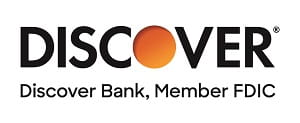Credit is essentially the ability to borrow money or access goods and services with the understanding that you'll repay it later. It plays a vital role in our financial lives, influencing major purchases such as homes and cars, and impacting your broader financial health. Understanding the various credit products—such as credit cards, personal loans, and lines of credit—is crucial because each offers unique benefits, terms, and fees.
For instance, while credit cards can provide convenience and rewards, they often come with high-interest rates if balances aren’t paid in full. By educating yourself about these products, you can make informed decisions, manage debt wisely, and build a solid credit history, paving the way for better financial opportunities in the future.
Credit Cards
Credit cards are financial tools that allow individuals to borrow money from a credit issuer up to a predetermined limit, intended for purchasing goods and services. Each time a card is used, the credit card company pays the merchant on behalf of the cardholder, and the amount charged is then owed to the credit issuer, usually payable within a billing cycle.
Benefits of Credit Cards
One of the primary benefits of credit cards is their convenience and ease of use, allowing for quick transactions without needing to carry cash. Many credit cards offer attractive rewards and cashback programs, enabling users to earn points or a percentage of their spending back, which can be redeemed for various perks or discounts. Responsible use of credit cards can help build and improve an individual's credit history, a crucial factor when seeking loans or mortgages in the future.
Credit Card Drawbacks
However, credit cards also come with drawbacks. They often have high-interest rates, which can lead to significant debt if balances are not paid off in full every month. There is also the potential for overspending, as the immediate ability to borrow can tempt individuals to exceed their financial means. Mismanagement of credit cards can negatively impact one's credit score, making it essential for users to understand their spending habits and repayment strategies.
Loans
Loans are financial tools that enable individuals or businesses to borrow a specific amount of money from a lender, which is then repaid over a predetermined period with interest. The borrower agrees to the terms, including the repayment schedule and interest rate, making loans a crucial tool for financing major purchases or unexpected expenses.
Types of Loans and Their Uses
There are several types of loans available, each designed to meet different needs:
- Personal Loans: These mostly unsecured loans can be used for various purposes, including consolidating debt, financing a vacation, or covering emergencies. Since they don’t require collateral, interest rates may be higher than secured loans.
- Mortgages: Specifically for purchasing real estate, mortgages are secured loans where the property itself serves as collateral. They come in various terms and rates, often being a long-term commitment that can span 15 to 30 years.
- Auto Loans: Designed for purchasing vehicles, these loans are typically secured by the car itself. Borrowers must repay the loan amount plus interest over a specified period.
- Student Loans: These are specifically intended for educational purposes and can be federal or private. Private loans can have fixed or variable interest rates, while federal loans offer only fixed rates but have more flexible repayment plans than private loans, critical for enabling access to higher education.
Fixed Interest Rates vs. Variable Interest Rates
When taking out a loan, borrowers typically have the option of choosing between fixed or variable interest rates. Fixed rates remain constant throughout the life of the loan, providing predictability in monthly payments. On the other hand, variable rates fluctuate based on market conditions, which can result in lower rates during periods of decline but may also lead to increased payments if interest rates rise.
Secured Loans and Collateral
Secured loans require the borrower to provide collateral—an asset that the lender can claim if the loan is not repaid. Common examples include mortgages and auto loans, where the property or vehicle secures the loan amount. In contrast, unsecured loans do not require collateral, relying instead on the borrower's creditworthiness. However, the lack of collateral often results in higher interest rates due to the increased risk for lenders. Understanding these distinctions is essential for making informed borrowing decisions that align with your financial goals.
Lines of Credit
A line of credit is a flexible loan option that allows borrowers to access funds up to a specified limit, which can be drawn upon as needed. Unlike a traditional loan that provides a lump sum, a line of credit works similarly to a credit card, where you can withdraw money, pay it back, and borrow again within the approved limit. This credit product is particularly useful for covering unexpected expenses or managing cash flow fluctuations.
One of the main benefits of a line of credit is its flexibility in borrowing. Borrowers can draw funds as needed, making it ideal for various purposes such as home renovations, business expenses, or even consolidating higher-interest debts. Interest is only charged on the amount used, not the total credit limit, which can make repayment more manageable. This feature allows users to access money while keeping costs lower than with some other forms of borrowing.
However, there are notable drawbacks to consider. Lines of credit often come with variable interest rates, meaning the cost of borrowing can fluctuate based on market conditions. This unpredictability can make financial planning more challenging.
To avoid overspending, borrowers must maintain discipline and monitoring of their usage. Mismanagement, particularly maxing out the credit limit, can negatively impact credit scores, making it crucial to use this financial product responsibly. Understanding these aspects can empower individuals to leverage lines of credit effectively while safeguarding their financial health.
Credit Reporting and Monitoring Products
Credit reporting and monitoring products are services designed to track and report an individual's credit activity. These products provide users with access to their credit reports and scores from the major credit bureaus, allowing them to monitor their credit health regularly. The primary purpose is to help individuals understand their credit standing and identify any changes in their credit profile, such as newly opened accounts, payment history, and outstanding balances.
The advantages of using credit reporting and monitoring products are numerous. Firstly, they assist in tracking your credit score over time, helping you understand how your financial behaviors impact your creditworthiness. Additionally, these products often provide alerts for any significant changes or unusual activity in your credit report, which can help in the early detection of identity theft or fraud. This proactive monitoring adds a layer of security to your financial health, allowing you to respond quickly to potential threats.
Despite their benefits, there are some drawbacks to consider. Many credit monitoring services come with subscription costs, which can add up over time, especially if you opt for premium features. Also, an over-reliance on alerts from these services might lead to complacency regarding personal finance management. Not all monitoring services are created equal, and some may not provide comprehensive coverage or timely updates, potentially leaving gaps in your financial protection. Thus, it’s crucial to choose a reputable service and remain actively engaged in managing your credit health.











